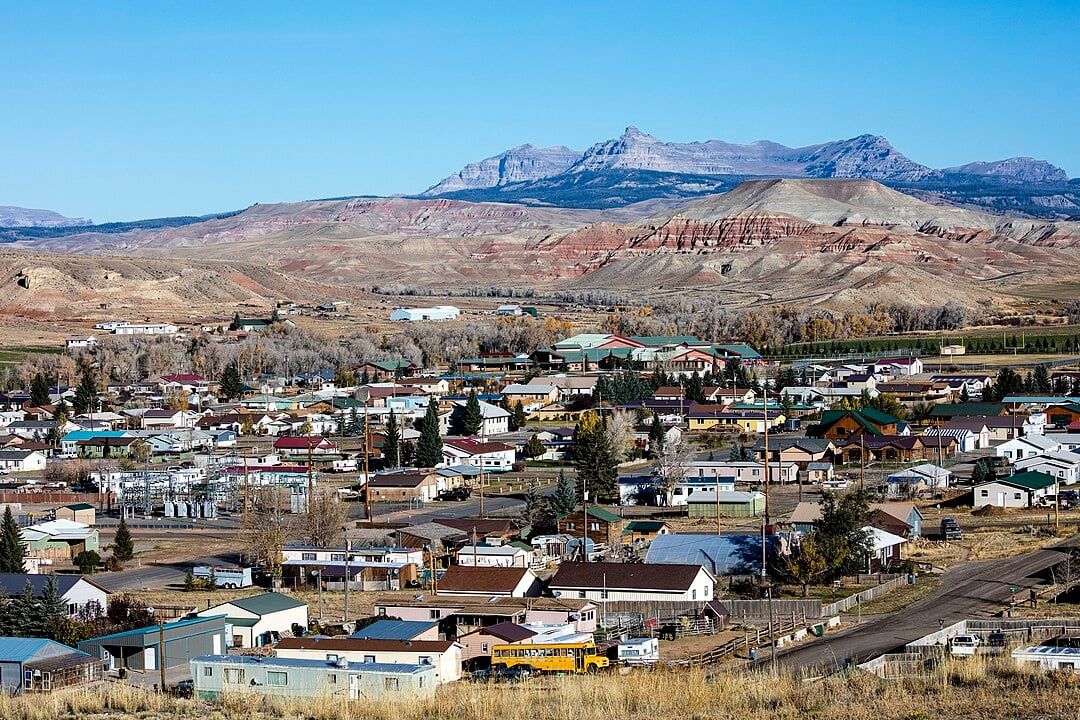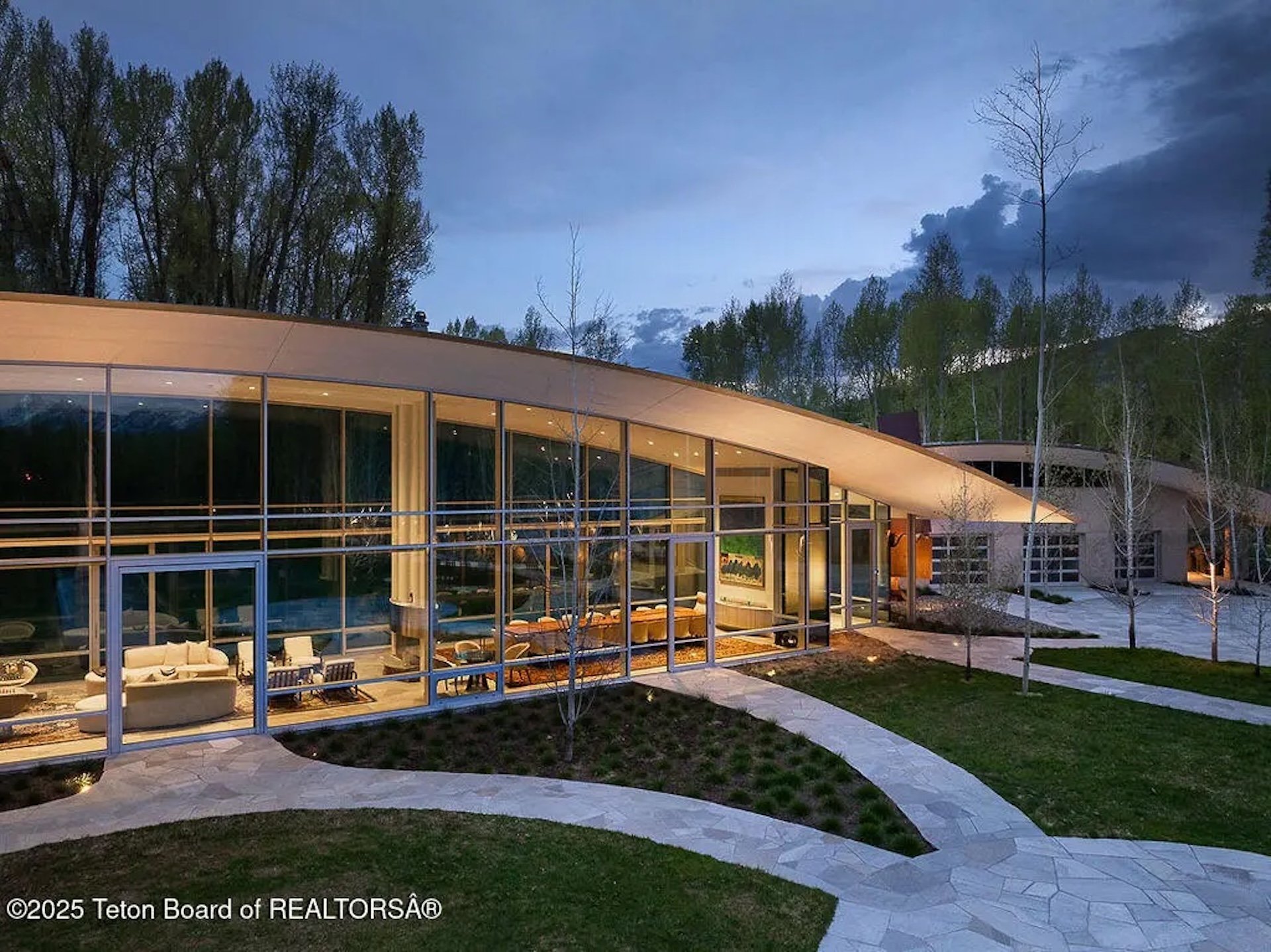Nestled in the southwestern corner of Wyoming lies the Bridger Valley, a serene landscape dotted with secluded towns that offer a tranquil escape from the hustle and bustle of city life. This region, rich in history and natural beauty, is home to communities where the pace slows, and the vast horizons invite you to breathe deep and relax. From historic forts to ghost towns, the Bridger Valley’s hidden gems are perfect for travelers seeking solitude and a genuine connection with nature and history. Let’s journey through these ten secluded towns, each offering its unique charm and a peaceful retreat under the endless Wyoming sky.
10. Lonetree: Solitude Under the Endless Sky

Lonetree is a sparsely populated area where the vastness of the prairie meets the infinite horizon. With a population of just a handful of residents, it offers unparalleled peace and quiet. Outdoor enthusiasts can enjoy horseback riding, hiking, and wildlife watching in the open landscapes that stretch as far as the eye can see. The main industry here is ranching, and the community thrives on a deep connection with the land. What makes Lonetree truly secluded is its remote location and the minimal signs of modern development, allowing for an authentic experience of the Wyoming wilderness.
Where is Lonetree?

Located in Uinta County, Lonetree sits north of Interstate 80, between the towns of Lyman and Mountain View. Its seclusion is enhanced by the miles of open range that surround it, with few roads leading into the area. Accessing Lonetree typically involves traveling along gravel and dirt roads that wind through the countryside, reinforcing its off-the-beaten-path allure. This isolation makes it an ideal spot for those looking to disconnect and immerse themselves in nature’s tranquility.
9. Hilliard: Relics of Industrial Dreams

Hilliard is a small, unincorporated community known for its historical charcoal kilns, remnants of a once-thriving industry in the late 1800s. With a population hovering around 50 residents, it offers a quiet environment steeped in history. Visitors can explore the well-preserved kilns and imagine the bustling activity of the past. The primary industries today are ranching and agriculture, maintaining the area’s rustic charm. Hilliard’s seclusion comes from its tucked-away location and the surrounding rolling hills that shield it from the outside world.
Where is Hilliard?

Situated south of Mountain View in Uinta County, Hilliard is accessed via small county roads that meander through the countryside. Its secluded nature is enhanced by the absence of major highways and the expansive ranch lands that envelop the community. The closest major route is Interstate 80, but even that lies a considerable distance away. This isolation provides a peaceful retreat for those interested in Wyoming’s industrial past and the serene beauty of its landscapes.
8. Piedmont: Echoes of a Ghost Town Past

Piedmont is a fascinating ghost town that once bustled with activity during the railroad expansion of the 19th century. Though uninhabited today, the remnants of stone charcoal kilns and a few wooden structures tell stories of its vibrant past. While there are no residents, adventurers can explore the ruins and enjoy the solitude of the open plains. The lack of industry and population makes Piedmont exceptionally secluded, offering a hauntingly beautiful glimpse into history without the crowds.
Where is Piedmont?

Piedmont is located southwest of Fort Bridger, off Interstate 80, accessible via a series of dirt roads that deter most casual travelers. Its seclusion is a result of its remote setting in the valley and the limited signage pointing the way. Navigating to Piedmont requires a sense of adventure and a good map or GPS device. The journey itself enhances the feeling of stepping back in time to a place forgotten by the modern world.
7. Milburne: Whispering Winds of the High Desert

Milburne is a tiny, unincorporated community where the population is sparse, and the landscapes are vast. The area’s high desert environment provides a unique setting for hiking, wildlife viewing, and experiencing the subtle beauty of Wyoming’s lesser-known regions. Ranching is the primary industry, and the residents live in harmony with the land. Milburne’s seclusion is defined by its distance from larger towns and the quiet that blankets the area, interrupted only by the sound of the wind.
Where is Milburne?

Located northeast of Mountain View, Milburne sits along small county roads that weave through the Bridger Valley. The town’s remote location is accentuated by the expansive rangelands and absence of significant development. Access is primarily by local roads, with the nearest major highway being several miles away. This isolation offers visitors and residents alike a serene environment far removed from the noise of city life.
6. Urie: Bridger Valley’s Best-Kept Secret

Urie is a quiet spot in the Bridger Valley that many travelers overlook. With a small population, it offers a peaceful rural atmosphere ideal for relaxation. The community serves as a gateway to nearby outdoor activities like fishing, hiking, and exploring the valley’s natural beauty. Agriculture and ranching are the mainstays of the local economy, contributing to its laid-back vibe. Urie’s seclusion stems from its understated presence and the preference of locals to keep it a hidden gem.
Where is Urie?

Urie is conveniently situated near the intersection of U.S. Highway 414 and Wyoming Highway 412, just north of Mountain View. Despite its proximity to these roads, Urie maintains a low profile, with limited commercial development and signage. The surrounding open spaces and agricultural lands enhance its secluded feel. Travelers can reach Urie easily by car, yet it remains a tranquil spot away from tourist-heavy destinations.
5. Carter: Hidden Crossroads of the Wild West

Carter is a tiny unincorporated community that once played a significant role in the region’s railway history. Today, with a population of fewer than 10 residents, it offers a glimpse into the quiet life of the Wyoming plains. Visitors might explore the old railway remnants or enjoy the open landscapes ideal for photography and solitude. The primary industry is ranching, and the town’s seclusion is amplified by its near-abandonment and untouched surroundings.
Where is Carter?

Located east of Evanston and south of Interstate 80, Carter sits along the old Union Pacific Railroad line. Its seclusion is due to its distance from major towns and the minimal traffic that passes through. Access is via county roads that branch off the main highways, leading travelers through stretches of open prairie. This remoteness makes Carter an intriguing destination for those interested in the quiet corners of the Wild West.
4. Robertson: A Quiet Retreat by the Blacks Fork River

Robertson is a serene community nestled along the Blacks Fork River, with a population of around 100 residents. It’s an ideal spot for fishing, camping, and enjoying the tranquility of the riverbanks. The town’s economy revolves around agriculture and ranching, emphasizing a lifestyle connected to the land. Robertson’s seclusion is characterized by its lush surroundings and the gentle flow of the river, providing a peaceful retreat from modern distractions.
Where is Robertson?

Situated northeast of Mountain View, Robertson is accessed via Wyoming Highway 411, which winds through picturesque rural landscapes. The town’s remote location is accentuated by the vast ranch lands and the absence of urban development. The Blacks Fork River enhances the feeling of seclusion, as the community is enveloped by natural beauty. Travelers seeking a quiet getaway will find Robertson’s secluded charm inviting and restorative.
🏡 Find Your Perfect Town in the USA
Tell us about your ideal lifestyle and we'll recommend 10 amazing towns across America that match your preferences!
3. Lyman: Small-Town Warmth Amidst Vast Plains

Lyman is a welcoming town with a population of approximately 2,100 residents. It offers a close-knit community atmosphere and is known for its annual Fort Bridger Mountain Man Rendezvous. Outdoor activities include hiking, fishing, and exploring the nearby Uinta Mountains. The main industries are agriculture, education, and small businesses that serve the local community. Lyman’s seclusion comes from its location within the expansive Bridger Valley and its distance from larger urban centers.
Where is Lyman?

Lyman is located along U.S. Highway 413, east of Mountain View, in the heart of the Bridger Valley. The town is surrounded by wide-open spaces and agricultural lands, contributing to its peaceful environment. While it is more accessible than some of its neighboring communities, Lyman maintains a secluded feel due to the surrounding natural landscapes and the small-town pace of life. It’s easily reachable by car but offers an escape from the crowded cities.
2. Mountain View: Gateway to Untouched Wilderness

Mountain View is a picturesque town with around 1,300 residents, serving as a gateway to the stunning Uinta Mountains. Outdoor enthusiasts can enjoy hiking, camping, and fishing in nearby forests and rivers. The town hosts community events that highlight local traditions and the area’s natural beauty. Key industries include agriculture, education, and services that support outdoor recreation. Mountain View’s seclusion is attributed to its location adjacent to vast wilderness areas and a tight-knit community vibe.
Where is Mountain View?

Situated in Uinta County, Mountain View lies along Wyoming Highway 414, south of Interstate 80. The town is nestled between rolling hills and close to the Bridger-Teton National Forest. Its seclusion is enhanced by the surrounding natural features and the limited commercial development in the area. Travelers can reach Mountain View by car, enjoying scenic routes that underscore the town’s remote and tranquil setting.
1. Fort Bridger: Step Back into Wyoming’s Pioneer Past

Fort Bridger is a historic town with a population of about 400 residents, famous for the Fort Bridger State Historic Site. Visitors can explore the restored fort structures, museums, and interpretive trails that bring Wyoming’s pioneer and military history to life. The town also hosts the annual Mountain Man Rendezvous, a celebration of the region’s fur trading legacy. The main industries are tourism and services related to the historic site. Fort Bridger’s seclusion is rooted in its placement amid vast plains and the preservation of its historical ambiance.
Where is Fort Bridger?

Located just off Interstate 80 in southwestern Wyoming, Fort Bridger is accessible yet maintains a secluded feel due to its expansive surroundings. It’s situated between the towns of Evanston and Green River, with the Uinta Mountains to the south. The town’s historical focus and rural setting contribute to its sense of isolation from modern urban life. Visitors can reach Fort Bridger by car, traveling through the open landscapes that characterize this peaceful region.
🏡 Find Your Perfect Town in the USA
Tell us about your ideal lifestyle and we'll recommend 10 amazing towns across America that match your preferences!






